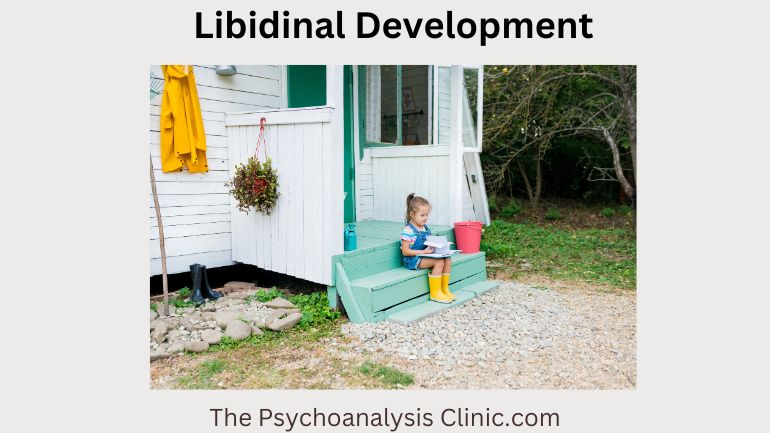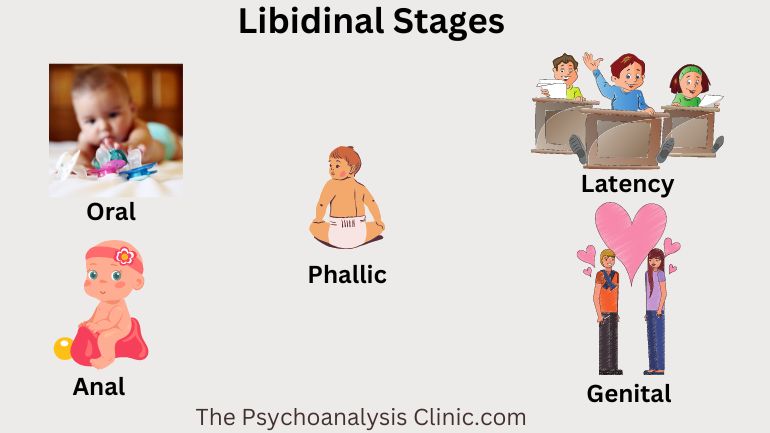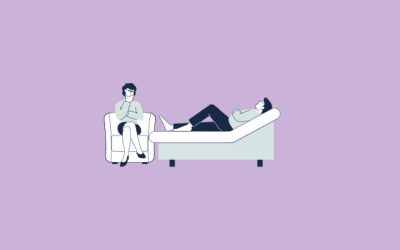What is the libidinal development?

Libidinal development, commonly known as psychosexual development, is the process of the sexual energy (libido) manifesting itself in different parts of the body and in different objects throughout life.
According to Sigmund Freud, there are five phases of the libidinal development: oral, anal, phallic, latency and genital.
Each phase has its own characteristics and influences the individual’s personality.
The libido is important for physical and mental health, as it is the force that motivates human behaviour.
Table of Contents
What is libido in psychoanalysis?
In psychoanalysis, the libido is the energy that directs human life and death drives. It is responsible for sexual behaviour, but also for other types of satisfaction, such as love, art, religion, etc.
The libido is dynamic and changes throughout the mind development, progressing through different phases and objects.
Psychoanalysis seeks to understand how the libido is expressed in the unconscious and how it influences the individual’s personality, symptoms and conflicts.
The sexual impulse is the concept that designates the source of libido, i.e. the tension that arises from bodily needs and seeks relief in contact with others.
Libidinal Development Stages

- Oral: this is the first phase of the libidinal development, which lasts from birth to 18 months. During this stage, the child’s mouth is the focus of the libidinal gratification and pleasure. The child explores the world by taking everything into their mouth, such as objects, fingers and their mother’s breast. This phase is important for the development of language, feeding and the emotional bond with the mother.
- Anal: this is the second stage of the libidinal development, lasting from 18 months to 3 years old. In this phase, the child’s anus is the focus of the libidinal gratification and pleasure. The child learns to control the elimination of faeces and urine, which involves issues of autonomy, discipline and limits. This phase is important for the development of the child’s personality, values and sense of order.
- Phallic: it is one of the stages of the psychosexual development proposed by Sigmund Freud. It occurs between the ages of 3 and 6 and it is characterised by the attention to the child’s genitals. During this phase, the child may develop the Oedipus or Electra complex, which are unconscious conflicts of desire for the parent of the opposite sex and rivalry with the parent of the same sex.
- Latency: it is the phase of a child’s libidinal development that lasts from approximately 6 to 12 years old. In this period, the libido is “dormant” and the child concentrates on intellectual and social activities, such as school and friends. It’s a period of learning and personality formation, in which the child can repress unresolved sexual desires from the previous phase; in this stage, the libido decreases considerably.
- Genital: it is the last stage of the libidinal development proposed by Freud, which begins at puberty and lasts until adulthood. During this phase, the libido manifests itself in a more intense and mature way, seeking pleasure with another person. It is a phase in which the Oedipus complex is overcome and sexual identity is shaped.
How does the libidinal development affect a person’s personality?
According to Freud, the stages of the libidinal development affect personality because they are the moments when the individual faces conflicts between their sexual impulses and the demands of reality.
If these conflicts are not resolved properly, the individual can become fixated on one phase and develop personality traits related to it.
For instance, a person fixated on the oral phase can be dependent, passive, greedy or aggressive.
A person fixated on the anal phase can be stubborn, stingy, authoritarian or disorganised.
A fixation on the phallic phase: an individual can be vain, narcissistic, competitive or insecure.
Latency fixation: a person can be repressed, introverted, moralistic or conformist.
Someone fixated in the genital phase can be mature, balanced, creative or loving.
How is it the libidinal development in the other schools of psychoanalysis?
The stages of the libidinal development proposed by Sigmung Freud are one of the foundations of psychoanalysis, but they are not the only ones.
Other schools of psychoanalysis, such as Jungian, Kleinian, Lacanian and Winnicottian, also present their own views on how human sexuality develops in childhood and adolescence.
- Jungian psychoanalysis, founded by Carl Gustav Jung, disagrees with Freud on some points, such as the role of the Oedipus complex and the nature of the libido. For Jung, libido is a general psychological energy that can manifest itself in different ways, not just sexual ones. Furthermore, Jung proposes that the psychosexual development is influenced by archetypes, which are primordial images present in humanity’s collective unconscious. One of the most important archetypes is the anima and animus, which represent the feminine and masculine aspects of each individual. According to Jung, the libidinal development involves the integration of these opposing aspects in the personality.
- Kleinian psychoanalysis, founded by Melanie Klein, emphasises the role of unconscious fantasies in the development of children’s sexuality. For Klein, children go through two main phases: the paranoid-schizoid and depressive positions. In the first phase – which occurs in the first few months of the baby’s life – the child relates to partial objects, such as the mother’s breast, that can be good or bad, depending on the satisfaction or frustration they provide. In the second phase – which takes place between 6 months and 1 year old – the child begins to perceive objects as whole and complex, and develops ambivalent feelings towards the mother. In this phase, the child also experiences the Oedipus complex and castration anxiety.
- Lacanian psychoanalysis, founded by Jacques Lacan, reinterprets Freud’s ideas in the light of linguistics and philosophy. For Lacan, the libidinal development is categorised by three stages: the mirror, the symbolic and the real stages. In the mirror stage – which occurs between the ages of 6 and 18 months – the child recognises himself for the first time in the reflection of a mirror and creates an idealised image of him/herself. In the symbolic stage – which happens between 18 months and 6 years old – the child enters the realms of language and social norms, represented by the father figure. In this phase, the child also experiences the Oedipus complex and symbolic castration. In the stage of the real – which occurs after the age of 6 – the child is confronted with the limits of language and reality, and searches for an unattainable object of desire.
- Winnicottian psychoanalysis, founded by Donald Winnicott, emphasises the role of the environment and emotional relationships in the libidinal development. According to Winnicott, children go through three phases: absolute dependence, relative dependence and towards independence. In the first phase – ranging from birth to 6 months – the child is totally dependent on their mother or carer to meet their physical and emotional needs. During this phase, the child also develops a transitional object, such as a teddy bear or nappy, which represents the mother’s presence in their absence. In the second phase – lasting from 6 months to 2 years old – the child begins to explore the outside world and differentiate themselves from their mother or carer. In this stage, the child also plays with intermediate objects, such as blocks or dolls, which stimulate their creativity and symbolic capacity. In the third phase – which runs from the age of 2 to 5 – the child acquires greater autonomy and self-confidence. In this phase, the child also relates to other people and learns social rules.



